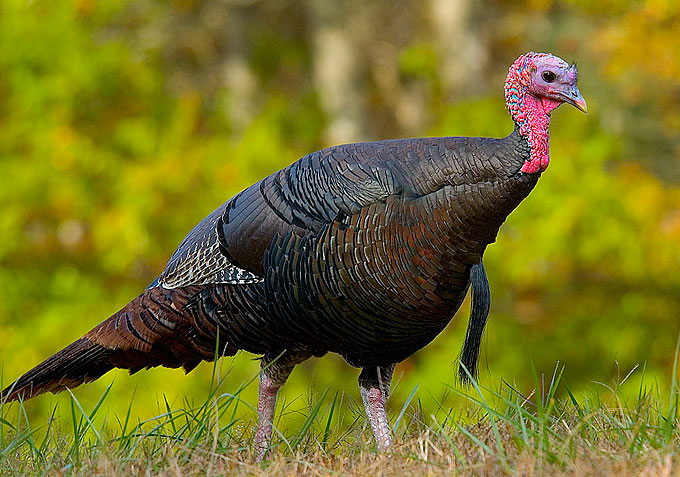Biology: Wild Turkey
Male turkey.
Turkeys roomed wild in North American woodlands. They were eaten by indigenous people and domesticated by Europeans. But, by the early 20th century, wild turkeys no longer roamed over much of their traditional range. They had been wiped out by hunting and the disappearance of their favored woodland habitat.
The turkeys eat nuts, seeds, fruits, insects, and salamanders off the forest and swamp floor.
Male turkeys puff-up their feathers to attract a mate. They also make a gobble sound which can be heard 1.5 km away.
Females lay 4 to 17 eggs, and feed their chicks after they hatch—but only for a few days. Young turkeys quickly learn to fend for themselves as part of mother/child flocks that can include dozens of animals. Males take no role in the care of young turkeys.
Wild turkey have been reintroduced to the wild since the 1940s and can be found in Continental North America along with Hawaii, Europe, and New Zealand.
One way to tell the difference between a domestic turkey and a wild one is that domestic turkey come from a Mexican subspecies and have a white tipped tail.
Sources:
National Geographic




0 comments:
Post a Comment